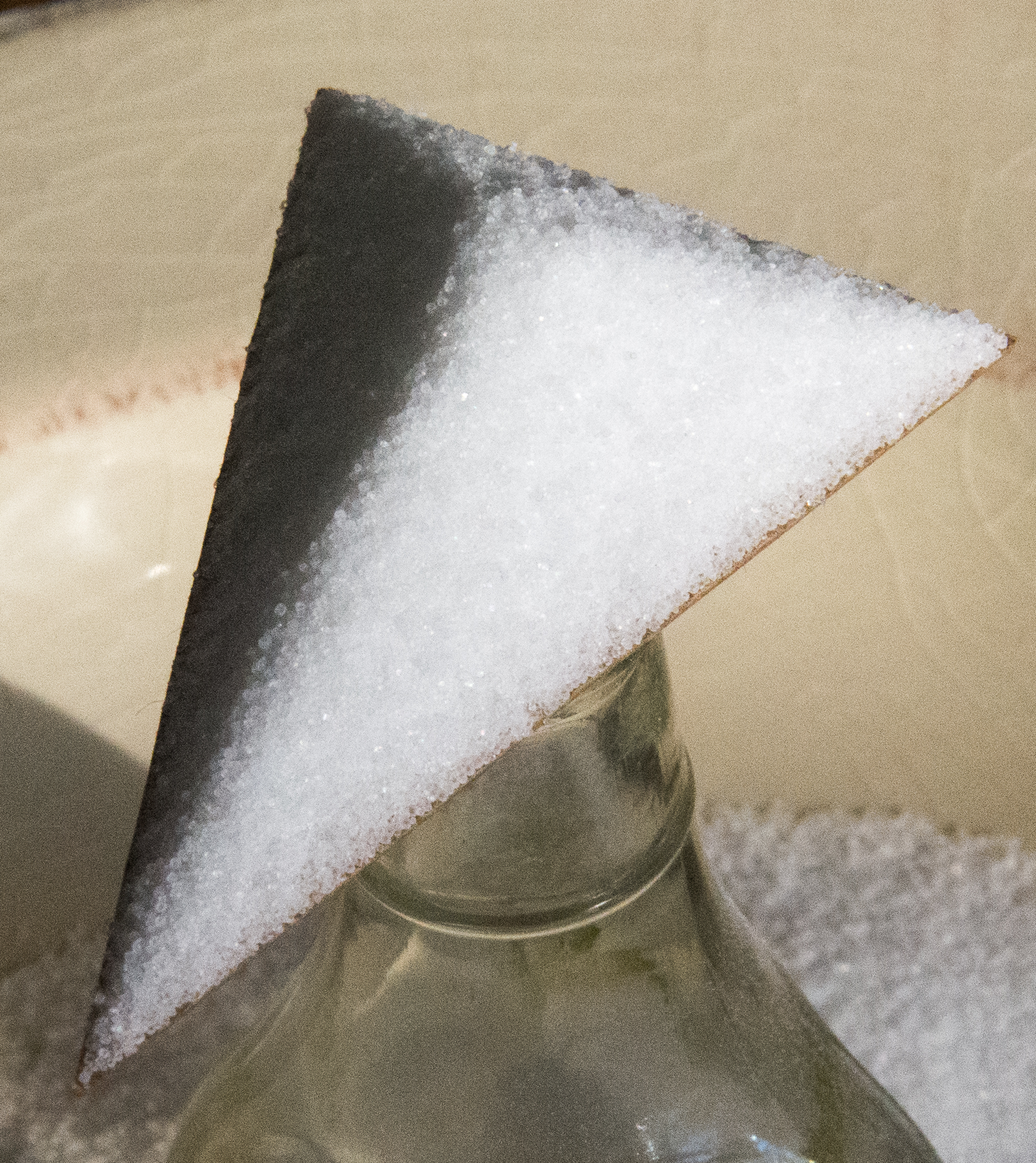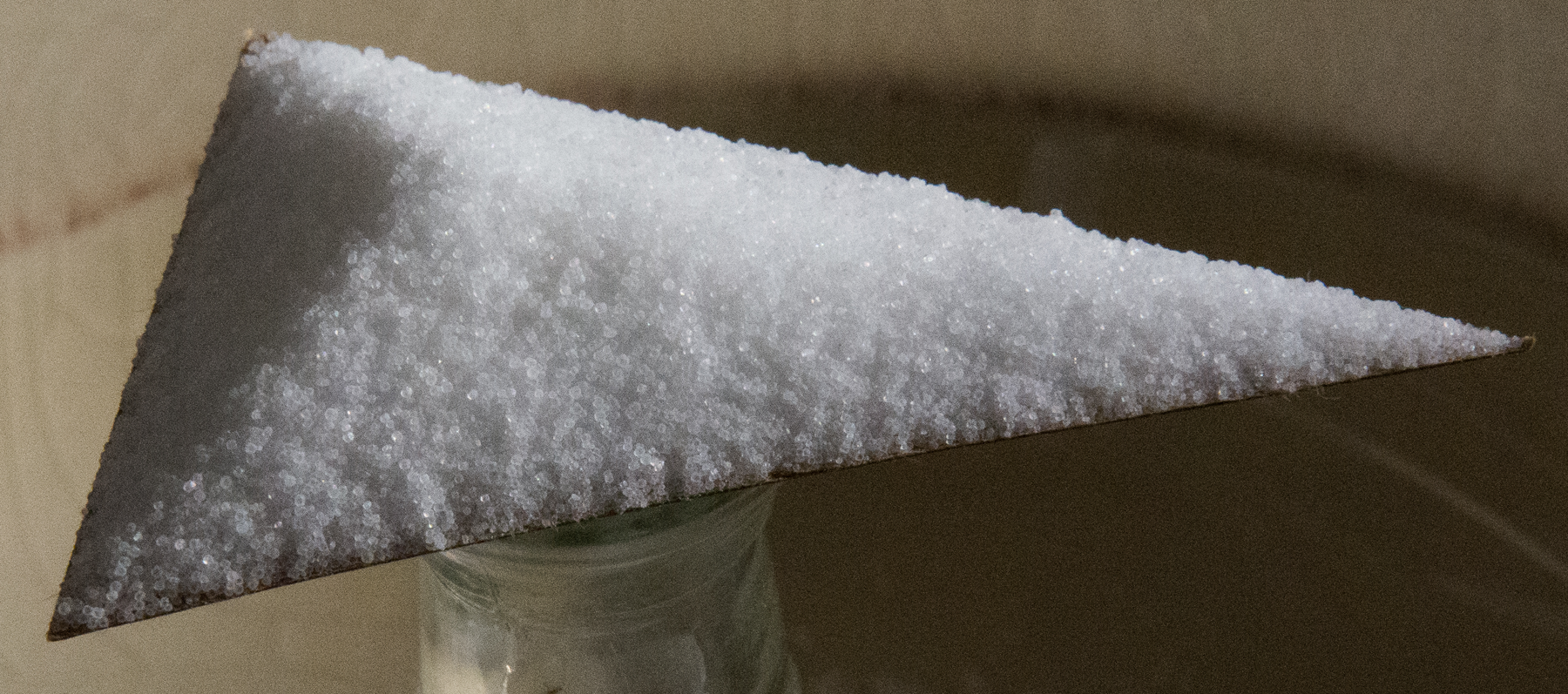Lesson 6
A Special Point
- Let’s see what we can learn about a triangle by watching how salt piles up on it.
6.1: Notice and Wonder: Salt Pile
What do you notice? What do you wonder?



6.2: Point and Angle
Here is an angle \(BAC\) with 2 different sets of markings.


- Point \(E\) is the same distance away from each side of angle \(BAC\). Make a conjecture about angles \(EAB\) and \(EAC\) and prove it.
- Point \(H\) is on the angle bisector of angle \(BAC\). What can you prove about the distances from \(H\) to each ray?
6.3: What If There Are Three Sides?
Two angle bisectors have been constructed in triangle \(ABC\). They intersect at point \(G\).

- Sketch segments that show the distances from point \(G\) to each side of the triangle.
- How do the distances from point \(G\) to sides \(AB\) and \(BC\) compare? Explain your reasoning.
- How do the distances from point \(G\) to sides \(AC\) and \(BC\) compare? Explain your reasoning.
- Will the third angle bisector pass through point \(G\)? Explain your reasoning.
What shape would the ridge form if you poured salt onto a piece of cardboard with a long straight edge and a small hole cut out of it? Explain your reasoning.
Summary
Salt piles up in an interesting way when poured onto a triangle. Why does that happen?
As the salt piles up and reaches a maximum height, new grains of salt will fall off toward whichever side of the triangle is closest. We can show that points on an angle bisector are equidistant from the rays that form the angle. So, salt grains that land on an angle bisector will balance and not fall towards either side. This is why we see ridges form in the salt.

As we might conjecture from the salt example, all 3 angle bisectors in a triangle meet at a single point, called the triangle’s incenter. To see why this is true, consider any 2 angle bisectors in a triangle. The point where they meet is the same distance from the first and second sides, and also the same distance from the second and third sides. Therefore, it’s the same distance from all sides, so the third angle bisector must also go through this point.
In the images, segments \(RT,AD,BD,\) and \(CD\) are angle bisectors. This means that point \(T\) is the same distance from ray \(RQ\) as it is from ray \(RS\). In triangle \(ABC\), point \(D\) is the same distance from all 3 sides of the triangle—it’s the triangle’s incenter.


Glossary Entries
- circumcenter
The circumcenter of a triangle is the intersection of all three perpendicular bisectors of the triangle’s sides. It is the center of the triangle’s circumscribed circle.
- circumscribed
We say a polygon is circumscribed by a circle if it fits inside the circle and every vertex of the polygon is on the circle.
- cyclic quadrilateral
A quadrilateral whose vertices all lie on the same circle.
- incenter
The incenter of a triangle is the intersection of all three of the triangle’s angle bisectors. It is the center of the triangle’s inscribed circle.

